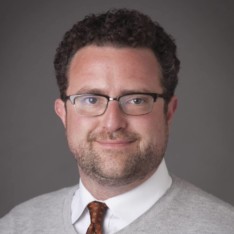The Academy’s Monopoly on the Truth Is Crumbling

Academia has traditionally built high walls around itself, with experts expanding the frontiers of knowledge and everyone else accepting it. Academic elites often behave with a kind of cronyism, their relationships further un-leveling the playing field. But like an old corporation run on a self-perpetuating crony capitalism, such an established order can be disrupted by new technology–not destroyed, but gradually changed and improved both from without and within.
The astonishing story of the Gospel of Jesus’s Wife that has unfolded over the past decade reveals both a stark example of that cronyism and cause for hope that change is underway. There are a dizzying number of individually fascinating moving parts in the affair. A loose network of scholars and enthusiasts was instrumental in showing that a star professor and by extension Harvard University itself had fallen victim to a con man who forged an ancient “gospel” that suggested Jesus was married.
Where many see a shocking story of a broken system, I see evidence that the system is slowly moving in the right direction. The summary below scratches the surface of this dizzying quintessentially 21st century story. I highly recommend journalist Ariel Sabar’s Atlantic article and book, as well as the NT Pod (episodes 87-90 of Duke professor Mark Goodacre’s podcast are about an hour’s worth of total listening), for readers who want to know more.
Good News and Bad News
The International Congress of Coptic Studies does not usually make waves in mass media or popular culture. But at the group’s 2012 meetings in Rome, unbeknownst to most of the attendees, Harvard professor Karen King had a big announcement planned in conjunction with her scheduled lecture. Among the small handful of people who did know what was coming were reporters from The New York Times and Smithsonian magazine, given exclusive access to King and with front-page articles ready to go live. Back in Cambridge, Massachusetts, Harvard waited to launch a special website of its own.
King announced the discovery of an ancient papyrus fragment, no bigger than a business card, with text in the coptic language that appeared to be part of a previously undiscovered gospel. This would have been enough to constitute a professional bombshell for those attending the conference, including scholars who had spent their careers researching non-canonical gospels (written by early Christian groups but not making it into the New Testament with Matthew, Mark, Luke, and John). The imminent media frenzy, however, was to be focused on one particular faded and fragmentary line of text.
King’s translation: “Jesus said to them…my wife.”
It is difficult to imagine a few ancient words written on papyrus more perfectly suited to generate public interest. King’s own work had long approached non-canonical early-Christian texts with the thesis that groups like the gnostics, ultimately marginalized by the church, had differing and more egalitarian views toward women. King had even done considerable research on Mary Magdalene before Dan Brown’s novel The DaVinci Code had blasted fictionalized versions of the ideas into public consciousness. King had played ball with Da Vinci code mania, doing interviews in numerous articles and documentaries in the novel’s wake.
Nearly a decade later King appeared eager to nip media hysteria surrounding the papyrus fragment in the bud. She reminded interviewers that the discovery was not direct evidence the historical Jesus had a wife, let alone a known figure like Mary Magdalene. Then again, she had taken to calling the fragment “The Gospel of Jesus’ Wife,” indicating a desire to ride the wave of media hype.
Within days, however, the news cycle had moved in a very different direction. Many academics who might have had a say in a robust peer review process but were excluded from the media push raised serious questions that the papyrus fragment was actually a forgery. Skeptical discussions coalesced around Duke professor Mark Goodacre’s NT Blog and other online sources.
Goodacre wrote about the concerns of a UK professor who noticed extreme similarities between virtually all of the extant text in the Gospel of Jesus’s Wife and the already well-known non-canonical Gospel of Thomas–as though a forger had cut and pasted quotations to assemble something seemingly new. Ironically, the public prominence and internet presence of the controversy, which gave short shrift to the traditional academic peer review process, may have led in the end to a more robust review overall.
Independent scholar Andrew Bernhard–all-too accustomed to not being on the academy’s radar–went a shocking step further. He confirmed that the actual text of the Gospel of Jesus’ Wife was lifted from the online Thomas translation by another independent scholar, Michael Grondin, with that translation’s idiosyncracies and even errors intact!
Finally, and most shockingly, was the issue of provenance–just where had this papyrus fragment come from? King had received the artifact from a private collector who had contacted her, and who King said wished to remain anonymous. Journalist Ariel Sabar, author of the Smithsonian piece that accompanied the 2012 announcement, discovered that Walter Fritz, a German who had emigrated to Florida, was in reality an endlessly fascinating and often perplexing con man.
Fritz, a frustrated Egyptology grad student in Berlin in the early 90s, who had spent subsequent decades as a machine parts salesman and adult filmmaker, never issued a direct mea culpa. But as detailed in Sabar’s new book Veritas: A Harvard Professor, A Con Man, and the Gospel of Jesus’s Wife, hours of conversations with Fritz left beyond any doubt that he had forged the document and duped King and Harvard.
Cronies in the Ivory Tower
Much discussion around the Gospel of Jesus’s Wife affair centers around the role of Karen King herself. The facts in the sources I recommended above confirm with near-unanimity that King never was and never became a knowing participant in the forgery and surrounding fraud. At the same time, she didn’t do the due diligence around some aspects of the papyrus thoroughly enough, and exploited personal connections to cut corners.
King serves as a lightning rod for some people, but limiting these events to a story about the gradual deterioration of academia would be woefully incomplete. This isn’t a story about experts versus outsiders, but rather the increasing interaction and even blurred lines between the two.
King inhabits an institutional old guard. In the insular environment of academia, highly self-serving and self-perpetuating practices evolve. King is never explicitly dishonest, but her behavior is analogous to a sort of crony capitalism. An unspoken understanding that King was above sweating the details proved efficient in publicizing a false discovery, but remarkably brittle when faced with a forger who knew how to play the people and systems involved.
Take the peer review process. One of the three reviewers was a papyrologist and friend of King who had examined the fragment already as part of King’s informal scouting among close colleagues. The papyrologist even admonished the Harvard Theological Review over email that this was inappropriate–it’s unlikely he and King directly interacted very much about it. But their connection greased the wheels that made every step along the way easier for everyone.
These connections–even if by accident–extended to scientists who produced favorable, though simplistic and flawed, results in carbon dating. Of the four scientists who issued reports to corroborate King’s HTR article, two were a brother-in-law of the papyrologist noted above, and a childhood friend of King’s respectively. When the adults in the room needed something fast, they did what, admittedly, most of us would do. They called people they knew.
The emergent cronyism seems to project nicely onto debates about academia people already have. But the story of the Gospel of Jesus’s wife isn’t about the perils of academia’s closed doors. The fact that it’s a story at all owes to it documenting the slow opening of those doors.
The Innovators
If traditional academia in this story resembles a large corporation ripe for disruption, the obvious heroes are the outsiders, both independent scholars and enthusiasts who do their homework. Michael Grondin should thrill any student of dispersed knowledge in society. Grondin produced his utilitarian but highly unconventional interlinear translation of the Gospel of Thomas as part of an attempt to find and decipher some type of theorized ancient code. But he was part of a community of often eccentric thinkers connected on the internet by fascination with the New Testament.
Grondin, Andrew Bernhard, and other independent scholars are often ignored by academia, and are often interested in entirely different things. When they become part of an open and transparent conversation their often unique specialized knowledge doesn’t substitute for the work of academics; it provides perspectives and ideas the experts never would have had and can now use.
The real action in this story of academic disruption happens at the points where the academic establishment and the entrepreneurial outsiders meet. Duke professor Mark Goodacre’s NT Blog was one of several places where academics and outsiders mingled and slowly worked out the many puzzles of the Gospel of Jesus’s Wife.
Just like in markets, truly revolutionary technologies never destroy the old order–they usually accomplish more through adoption, changing established players from within. Bernhard wound up published in New Testament Studies, rare for a researcher without a faculty position next to their name.
Goodacre expressed sadness about all the time and effort that had been “wasted” establishing what the denizens of Harvard should have known in the first place, that the Gospel of Jesus’s wife was a forgery. I must strongly disagree. Goodacre’s efforts, especially as a hub where traditional academic insiders and outsiders met, teaches us much about how new technology changes old institutions. More academics should learn the lesson.










